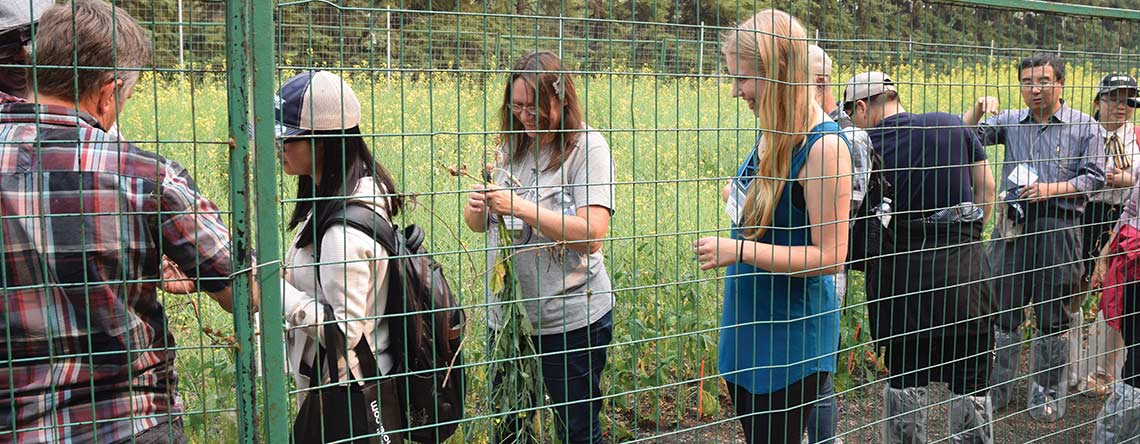Writing my first Editor’s Note for The Communicator is bittersweet. I am excited to personally address CAAR members but, this opportunity came with the news that our Editor-in-Chief, Lynda Nicol, was leaving CAAR after 10 years with the association. It was a pleasure to work with Lynda, and I wish her all the best in the future.

My name is Laura Wiens. I have now been writing about agriculture for two years and have served as editor of The Communicator for the past year. I always knew I wanted a career in writing and editing, but before starting with Suckerpunch, I had no experience with agriculture, let alone ag retail.
Working in ag communications, I realize just how much my city-peers and I take the growing of our food for granted. Growing up, we understood that you needed money to buy food and that many people were less fortunate than we were. But, as long as you could afford it, food would always be waiting for you on store shelves.
Now I understand that we owe our plentiful and high-quality food to farmers and the ag value chain, and that there are a whole host of social and regulatory factors that influence farmers’ ability to continue producing safe, high-quality crops to feed the world.
Knowing what I know now, I am frustrated to see the attitudes, often accompanied by misinformed “facts,” with which many people regard modern agriculture. If technology and innovation can improve society when it comes to medicine, transportation and more, why should agriculture and food be any different?
For this issue I had the great pleasure to work on our feature article “A Persistent Perception Challenge.” When preparing for and writing this story, I knew it would be crucial to highlight the importance of modern agriculture and how incorrect perceptions about the tools used by farmers can harm the long-term sustainability of agriculture. I am very proud to be able to use my writing to support such an important cause.
I have learned, and continue to learn, about ag through the events I’ve attended, the reading I’ve done, and perhaps most importantly, the conversations I’ve had with CAAR members and others, who have been more than happy to share their stories with me, and help a city girl better understand this industry.
That’s why I believe it is important for people, like you, who work in agriculture to continue sharing your stories and defending your industry against people who choose to ignore facts and who spread fear about modern agriculture. Just as we are thankful for food, we should be thankful for the tools that make a plentiful, reliable food source possible. Thankful; not afraid.
Enjoy the December issue,
Laura Wiens
Related Articles
- Coal as cow feed? Researchers turn coal into an edible protein as part of cattle feed—is it a diamond in the rough? By Andrew Joseph, Editor Centuries before coal was used to heat homes, be they castles or peasant huts, it was use...
- Strategies to recruit top talent Craft tailored compensation packages, offer flexible work arrangements, and create an optimum work environment. By Denise Faguy, Associate Editor Data from the Canadian Agricultural Human Resource Council (CAHRC)...
- Increasing your company’s brand reputation A well-thought-out brand marketing campaign will help you grow and promote your brand. By Andrew Joseph, Editor A company is often only as good as how the customer or consumer perceives it to be. It doesn’t even...
- The world of seed technology: things to know for 2024 With science changing along with the seasons, we look at the world of seed technology, offering a forecast. By Marc Zienkiewicz, Senior Editor of Seed World Group Right now exciting things are on the horizon for ...
- Show your mature workforce the love they deserve Learn how the top employers support the ever-evolving needs of their employees through their changing career phases. By Denise Faguy, Associate Editor If there’s one thing all within CAAR can agree upon, is that ...
 How to resolve AdBlock issue?
How to resolve AdBlock issue? 
Join the discussion...
You must be logged in as a CAAR member to comment.
Report
My comments